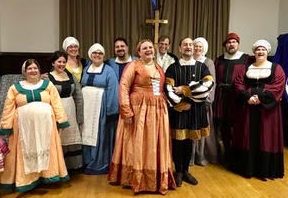Advent is the first season in the church year, comprising the four weeks before Christmas. The word “Advent” comes from the Latin, “to come,” and the church has observed Advent as weeks of preparation since the fifth century with themes of watchfulness, preparation, and hope infusing this season. Together we both anticipate the celebration of God’s coming in the form of the Christ child and the final coming of Christ in the time to come. Blue or purple is the appointed color for the season.
A Few Notes on Current Practices for Celebrating Advent
- Lutheran churches observe Advent in numerous ways. Most light the advent wreath during the four weeks of Advent, adding one new candle each week. These candles are typically lit during the Gathering rite. Prayers for the Advent Wreath lighting can be found in Sundays and Seasons.
- Some congregations hold midweek services during the Advent season.
- Many congregations experience the challenge of celebrating Advent in a culture that celebrates Christmas during the month of December. The commercialism of Christmas can so easily creep into the faith practices of the church. Some congregations hold Advent Festivals for the Sunday school or Advent musical events to help the faithful understand how to keep Advent amid the culture’s early celebration of Christmas. Advent devotional booklets for home use are also a helpful resource.
- Theological issues related to Advent often come up when discussing worship planning, especially related to musical matters. On the one hand, Advent is a time to prepare, to sing music related to the impending birth of Christ. On the other hand, as Christians, we know that Christ is already present with us. It is important that Advent is not a “pretend time,” as if Jesus had never come into the world. Focusing on the waiting for the light of Christ in a dark world and on the eschatological nature of Advent can help make Advent a more depth-filled, honest time of waiting.
- Keeping this in mind, it is wise to make musical decisions in Advent (as in all other times) with care. Some assemblies do not sing any Christmas carols in Advent, remaining true to the spirit of watching and waiting that characterizes the season. Other congregations, for pastoral or teaching reasons, begin to sing some Christmas carols in Advent. If a new Christmas hymn is to be learned, for example, Advent might be a time for teaching.


 “In the name of the Father, and of the
“In the name of the Father, and of the 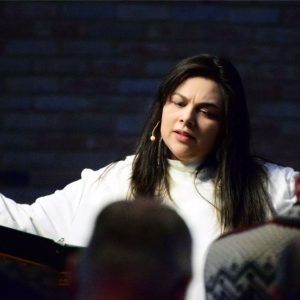
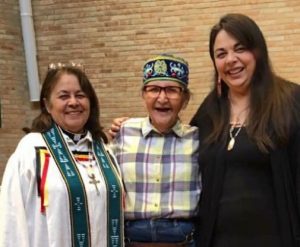 This Native American Liturgical Celebration and Service of Reconciliation was created by Kelly Sherman-Conroy, a member of the Oglala Sioux Tribe in Pine Ridge South Dakota, who attends Nativity Lutheran Church in St. Anthony, MN and also currently attends Luther Seminary. This liturgy, with the help of many people, was put together to in a meaningful way integrate Native culture and spirituality, and also keep some boundaries of the Lutheran Christian traditions. The result is that a profound and deeply spiritual experience has been created for all involved, not just in the worship practices themselves but in relationship with God and the other. In other words, inculturation (the adaptation of worship to various cultural settings) aims to deepen the spiritual life of the assembly through a fuller experience of Christ who is revealed in Native people’s language, rites, arts, and symbols.
This Native American Liturgical Celebration and Service of Reconciliation was created by Kelly Sherman-Conroy, a member of the Oglala Sioux Tribe in Pine Ridge South Dakota, who attends Nativity Lutheran Church in St. Anthony, MN and also currently attends Luther Seminary. This liturgy, with the help of many people, was put together to in a meaningful way integrate Native culture and spirituality, and also keep some boundaries of the Lutheran Christian traditions. The result is that a profound and deeply spiritual experience has been created for all involved, not just in the worship practices themselves but in relationship with God and the other. In other words, inculturation (the adaptation of worship to various cultural settings) aims to deepen the spiritual life of the assembly through a fuller experience of Christ who is revealed in Native people’s language, rites, arts, and symbols.

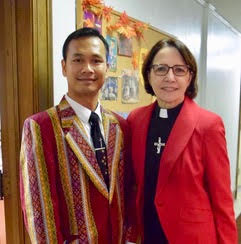 Last Sunday for the 500th anniversary of the Reformation, St. Stephen in Syracuse, NY worshipped with two other congregations; those who also worship in our building. Both are immigrant Christian congregations, not connected to the ELCA, except through us. The small Burundi church understands English and didn’t want anything translated. They were happy to be in among the assembly. However, the Evangelical Living Church (ELC), a Burmese Chin congregation, doesn’t understand English as well, so we used an outline (with some explanations) of our joint worship up on their screen with a PowerPoint in Chin. Detailed explanations were printed of what we’re doing and why in our English worship bulletin. We worked closely with the ELC, over three weeks, to pull our Reformation worship together in both languages. The Gospel was read in English by me and in Chin by Pastor Elisha Thwang. Pastor Elisha also offered a prayer in Chin after the Thanksgiving for the Word. In addition, the ELC choir, most of whom attend high school in the city, joined our own choir for the event. Our worship was filled with the grace-filled readings, prayers, and joyful music in English and Chin. We used the ELC’s version of an “Alleluia” for our Gospel Acclamation (to the tune of Amazing Grace: Alleluia, Alleluia, Alleluia Amen… Alleluia, Alleluia, Alleluia Amen), and the ELC Choir, along with Pastor Elisha offered an Anthem in Chin, the title, of which translated: Standing on the Promises.
Last Sunday for the 500th anniversary of the Reformation, St. Stephen in Syracuse, NY worshipped with two other congregations; those who also worship in our building. Both are immigrant Christian congregations, not connected to the ELCA, except through us. The small Burundi church understands English and didn’t want anything translated. They were happy to be in among the assembly. However, the Evangelical Living Church (ELC), a Burmese Chin congregation, doesn’t understand English as well, so we used an outline (with some explanations) of our joint worship up on their screen with a PowerPoint in Chin. Detailed explanations were printed of what we’re doing and why in our English worship bulletin. We worked closely with the ELC, over three weeks, to pull our Reformation worship together in both languages. The Gospel was read in English by me and in Chin by Pastor Elisha Thwang. Pastor Elisha also offered a prayer in Chin after the Thanksgiving for the Word. In addition, the ELC choir, most of whom attend high school in the city, joined our own choir for the event. Our worship was filled with the grace-filled readings, prayers, and joyful music in English and Chin. We used the ELC’s version of an “Alleluia” for our Gospel Acclamation (to the tune of Amazing Grace: Alleluia, Alleluia, Alleluia Amen… Alleluia, Alleluia, Alleluia Amen), and the ELC Choir, along with Pastor Elisha offered an Anthem in Chin, the title, of which translated: Standing on the Promises.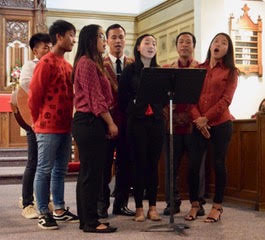 It was such an exciting day for us all – beyond my imagination for sure! We had been talking about having a joint worship for some time, and Reformation Sunday just seemed to be the perfect day to do it. It was a day to celebrate a church that is constantly reforming and always being made new. In doing so, we embraced our differences, while lifting up all the things we have in common. Last Sunday, nearly 500 years after Martin Luther offered up his 95 theses, St. Stephen sang A Mighty Fortress, together with folks from around the world, immigrants who came to the U.S. looking for a fortress of safety within our boundaries, sharing with us God’s own Mighty Fortress of grace and love for us all. We used a modified Service of the Word, and I inserted hymns where ever we could fit them. During the service, four of our youth affirmed their baptism in Confirmation, supported by every Christian present. It was truly a joy-filled and uplifting celebration for everyone.
It was such an exciting day for us all – beyond my imagination for sure! We had been talking about having a joint worship for some time, and Reformation Sunday just seemed to be the perfect day to do it. It was a day to celebrate a church that is constantly reforming and always being made new. In doing so, we embraced our differences, while lifting up all the things we have in common. Last Sunday, nearly 500 years after Martin Luther offered up his 95 theses, St. Stephen sang A Mighty Fortress, together with folks from around the world, immigrants who came to the U.S. looking for a fortress of safety within our boundaries, sharing with us God’s own Mighty Fortress of grace and love for us all. We used a modified Service of the Word, and I inserted hymns where ever we could fit them. During the service, four of our youth affirmed their baptism in Confirmation, supported by every Christian present. It was truly a joy-filled and uplifting celebration for everyone.